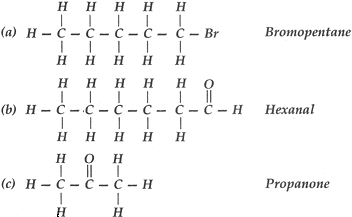10 Science Solved Sample Paper 5 – Page 2
Section C
Question: 6. What are the components of Biogas? How is biogas produced? Write any two advantages of this gas to the farmers. [3]
Answer:
Components of Biogas:
CH4(Methane) gas main component, other components are H2, CO2 and H2S gases.
Biogas is produced by the anaerobic decomposition of slurry made from waste animal dung in a biogas plant by the bacteria.
Two advantages of Biogas:
(i) Farmer get clean and better domestic fuel.
(ii) The spent slurry of the biogas plant can be used as manure in the crop fields.
Question: 7. Meetu heated sulphur powder in a spatula and collected the gas evolved. [3]
(i) Give the equation of the reaction for heating of sulphur.
(ii) Write the effect of gas on red litmus solution and blue litmus solution.
(iii) Give the type of ore whose heating will evolve the gas.
Answer:

(ii) SO2 gas has no red – litmus paper and this gas turns blue litmus to red, as this gas is acidic oxide.
(iii) Sulphide ores.
Or
Write balanced chemical equation for the following reactions:
(i) When copper is heated in air.
(ii) When aluminium is heated in air.
(iii) Aluminium oxide reacts with Sodium hydroxide.
Answer:

Question: 8. Define electrical energy and electrical power. Give their respective SI unit also. [3]
Answer: S.I. unit of electrical energy is Joule. S.I. Unit of electric power is Watt.
Question: 9: State Joule’s law of heating and give its mathematical form. An electric iron takes a current of 5A and develops 1.5 × 104 J of heat energy in 30s. Calculate the resistance of the electric iron. [3]
Answer: Mathematical form of Joules’ Law of Heating is, H = I2 R t
I = 5A; H = 1.5 × 104 J; t = 30 seconds; R = ?

Question: 10. (1). Name the major parts of the human brain.
(2). Name the part of brain responsible for maintaining the posture and balance of the body.
(3). Which tropic movement is responsible for the growth of pollen tubes towards ovules? [3]
Answer:
- Major parts of Brain are:
(i). Fore Brain
(ii). Mid Brain
(iii). Hind Brain, which has further 3 sub parts which are cerebellum, pons and medulla. - Cerebellum part of Hind Brain.
- Chemo-tropism.
Question: 11. Draw molecular structures of the following: [3]
(a) Hexanal
(b) Bromopentane
(c) Propanone
Answer: Molecular structures:

Or
An element belongs to 3rd period and group 17 of the modern periodic table, find out: [3]
(a) The number of valence electrons and valency
(b) Lewis structure of its compound with hydrogen
(c) Electronic configuration of this element
Answer: (a) No. of valence electrons – seven (7); Valency – 1

(c) 2, 8, 7
Question: 12. Name the cells which help Hydra to reproduce. How does a bud develop in Hydra? [3]
Answer: Regeneration Cells; Bud development in hydra: Repeated cell division at one specific site.
Question: 13. Two homologous structures in vertebrates. How do such organs help in understanding evolutionary relationship? [3]
Answer: Two homologous structures:
(i) Limbs of birds and reptiles
(ii) Limbs of reptiles and amphibians
Homologous structures indicate common ancestry.
Question: 14. (i) A diverging lens of focal length 15 cm, forms an image at distance of 10 cm from the lens. How far is the object placed from the lens?
(ii). Under what condition a diverging lens when placed in a medium behaves as a converging lens? [3]
Answer: (i) f = -15 cm, v = -10 cm, u = ?
1/u = 1/v – 1/f = – 1/10 – 1/-15 = -1/30 ∴ u = -30 cm
(ii) Condition: when refractive index of medium > refractive index of material of lens.
Question: 15. Explain the ‘ten percent law’ for the flow of energy, through a food chain. Why do we say that the flow of energy through the food chains is unidirectional? [3]
Answer: According to the ten percent law, 90% of the energy from the previous trophic level is lost as heat to the environment. Only 10% of the energy (food energy), present within the first trophic level flows to the second trophic level and in the same way from second trophic level to the third trophic level and so on. The energy, in the form of food always from first trophic level to the last trophic level of a food chain. It never flows back from the last trophic level to the first trophic level, so we say that of energy is unidirectional through the food chains.
 Class Notes NCERT Solutions for CBSE Students
Class Notes NCERT Solutions for CBSE Students





